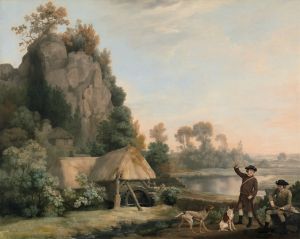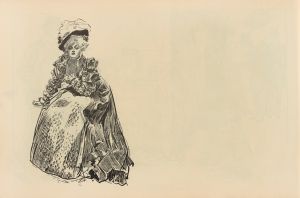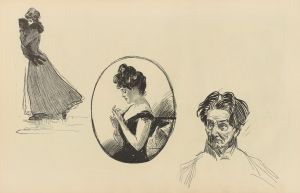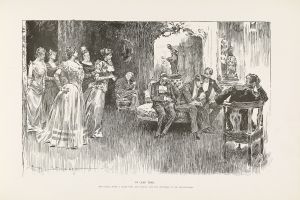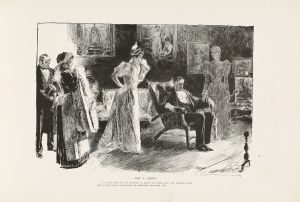
In leap year – The gentlemen leave the ladies to their tobacco and wine
A hand-painted replica of Charles Dana Gibson’s masterpiece In leap year – The gentlemen leave the ladies to their tobacco and wine, meticulously crafted by professional artists to capture the true essence of the original. Each piece is created with museum-quality canvas and rare mineral pigments, carefully painted by experienced artists with delicate brushstrokes and rich, layered colors to perfectly recreate the texture of the original artwork. Unlike machine-printed reproductions, this hand-painted version brings the painting to life, infused with the artist’s emotions and skill in every stroke. Whether for personal collection or home decoration, it instantly elevates the artistic atmosphere of any space.
Charles Dana Gibson was an influential American illustrator best known for his creation of the "Gibson Girl," an iconic representation of the American woman at the turn of the 20th century. His work captured the social dynamics and cultural shifts of his time, often with a touch of humor and satire. One of his notable illustrations is "In Leap Year – The gentlemen leave the ladies to their tobacco and wine."
This illustration is part of Gibson's broader body of work that often explored themes of gender roles and societal norms. The title itself, "In Leap Year," refers to the tradition where women were allowed to propose marriage to men, a reversal of the typical gender roles of the time. This tradition was a popular subject for humor and satire, and Gibson's work often played with such societal conventions.
The scene depicted in "In Leap Year – The gentlemen leave the ladies to their tobacco and wine" humorously inverts the typical social setting of the late 19th and early 20th centuries. During this period, it was common for men to retire to a separate room after dinner to enjoy tobacco and wine, leaving the women to converse among themselves. In Gibson's illustration, this norm is flipped, with the women taking on the role traditionally held by men. The gentlemen, in turn, are left to their own devices, highlighting the absurdity and rigidity of gender roles.
Gibson's work was published in popular magazines of the time, such as Life and Collier's Weekly, where his illustrations reached a wide audience. His ability to capture the zeitgeist with wit and elegance made him a household name. The "Gibson Girl" became a cultural phenomenon, representing the idealized American woman—independent, confident, and fashionable. While "In Leap Year – The gentlemen leave the ladies to their tobacco and wine" does not feature the Gibson Girl directly, it reflects the same themes of shifting gender roles and societal expectations.
The illustration is executed in Gibson's signature pen-and-ink style, characterized by its detailed line work and expressive characters. His technique allowed him to convey complex social commentary with clarity and humor. Gibson's illustrations often featured well-dressed, attractive individuals in settings that highlighted the social customs of the upper and middle classes.
Charles Dana Gibson's work, including "In Leap Year – The gentlemen leave the ladies to their tobacco and wine," remains significant for its insightful commentary on the social dynamics of his era. His ability to blend humor with critique made his illustrations both entertaining and thought-provoking, offering a window into the cultural shifts of the early 20th century. Today, his work is studied for its artistic merit and its reflection of historical social norms, continuing to be appreciated by audiences interested in art, history, and gender studies.








